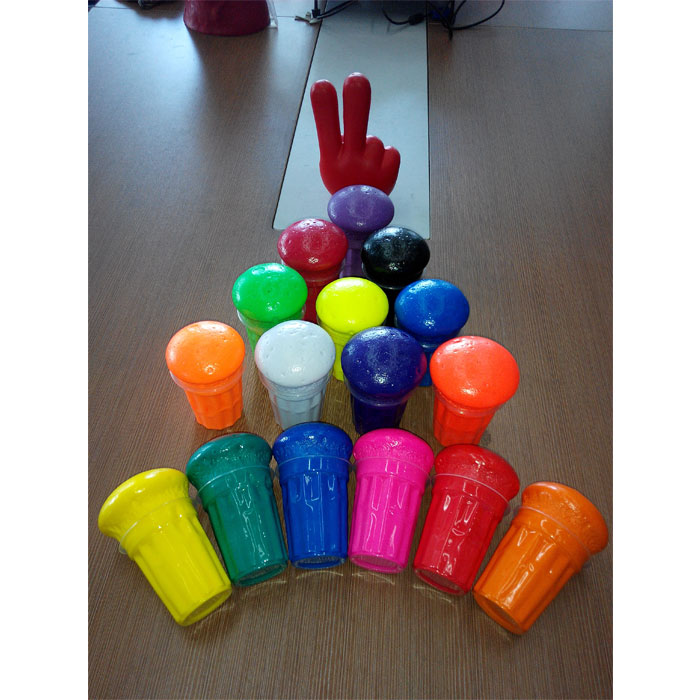ポリウレタン elastomer formed by the polymerization reaction of diisocyanate and active hydrogen compound, the rigid segment containing urea group composed of diisocyanate and diamine chain extender, the glass transition temperature is much higher than room temperature, and it is glassy at room temperature. Subcrystals or microcrystals form the plastic phase; flexible segments of polyether or polyester are gathered together to form the matrix or matrix of the ポリウレタン rubber. Because its glass transition temperature is lower than room temperature, it is called the rubber phase. The microphase separation of the ポリウレタン elastomer makes the ポリウレタン elastomer have the advantages of good wear resistance, wide range of hardness, high strength and high elongation, large load supporting capacity, good shock absorption effect and excellent oil resistance. Choosing a suitable molding and processing method can maximize the performance of ポリウレタン elastomers and prepare various ポリウレタン elastomers with excellent properties, which are widely used as plastics, rubber, fibers, adhesives and coatings, and even as functional polymer materials. Such as medical ポリウレタン材料。
1.1成形処理方法を選択するための一般原則
(1)成形加工は、通常、高分子化合物を固体(粉末または粒状)、ペーストまたは溶液状態で溶融または変形させ、金型で目的の形状を形成し、得られた形状を維持し、最終的に得られるものです。製品。クラフトプロセス。
(2)一般的な成形処理フロー:•ポリマー化合物の混合物を1回および2回成形して、製品を製造する方法。 •ポリマー化合物を形成して一度に製品を製造する方法。 •モノマー混合物から製品をワンステップで製造する方法•オリゴマー混合物のワンステップ製造方法。
(3)加工性能とその影響要因:•押出機、射出成形機のバレル、カレンダーのローラー、金型での圧搾性、押し出しにより材料が変形すると、材料の形状が得られます。そして維持された能力。その制限要因:溶融粘度、処理装置の構造、溶融レオロジー、および溶融流量。 •成形性、射出成形機、押出機、圧縮機の作用による成形工程において、温度と圧力の作用により材料が変形し、金型内で成形することができます。その制限要因:レオロジー、熱特性、その他の物理的および機械的特性、およびポリマー化合物の化学反応性。 •伸展性、カレンダーまたはストレッチでは、材料は一方向または二方向にカレンダーまたはストレッチすることによって変形します。その制限要因:材料の可塑性とひずみ硬化効果。 •紡糸性、押し出し成形中のノズル、成形によって連続的な固体繊維を形成する材料の能力。その制限要因:レオロジー、溶融粘度と強度、熱安定性と化学的安定性。
1.2成形および加工方法を選択するための一般原則ポリウレタンエラストマー
ポリウレタン elastomer molding processing system is divided into liquid system and solid system. On the basis of the rapid polymerization reaction of diisocyanate and active hydrogen compound, the molding processing method is conducive to the microphase separation of the ポリウレタン elastomer. , Liquid system, ポリウレタン casting glue can be processed by casting (manual casting, centrifugal casting and vacuum casting), reaction injection molding, spraying, knife coating, roller coating, laminating, laminating, bonding, vulcanizing, pasting and rubbing ; Solid system, ポリウレタン compound rubber can be vulcanized and laminated with mold, ポリウレタン thermoplastic can be used with thermoplastic, hot injection, calendering, blow molding, spinning and lamination.
1.3基本タイプと成形加工方法のマッチング原理
ポリウレタンエラストマーは、弾性率の点でプラスチックとゴムの間の高分子です。主に含まれていますポリウレタン compound rubber, ポリウレタン cast rubber, ポリウレタン water emulsion and ポリウレタン thermoplastic. ポリウレタン leather, ポリウレタン adhesives, ポリウレタン coatings, ポリウレタン compounds, ポリウレタン casting glues, ポリウレタン fibers, ポリウレタン water emulsions and ポリウレタン thermoplastics are all derived from the above four types of glue. The molding and processing methods of ポリウレタン compound rubber, ポリウレタン water emulsion and ポリウレタン thermoplastic generally belong to the molding processing methods of rubber, coatings and plastics.
1.4 The use of ポリウレタン elastomers and the matching principle of production continuity and molding processing methods
ポリウレタン elastomer molding and processing methods are matched with the use of ポリウレタン elastomers, taking into account the continuity of production. For example, ポリウレタン leather molding methods usually use ポリウレタン casting adhesive or foaming layer, ポリウレタン water emulsion and ポリウレタン thermoplastic as the surface layer; also available ポリウレタン thermoplastic and ポリウレタン water emulsion are used as leather separately, which are based on the basic rubber molding processing method, supplemented by foam molding processing, usually calender molding processing method is selected. ポリウレタン paving materials are made of ポリウレタン casting glue, mainly due to the large product shape and low precision requirements. Medical ポリウレタン materials have good chemical stability, tissue compatibility, and resistance to biological aging, so the molding process uses dip coating, pouring and coating methods.


